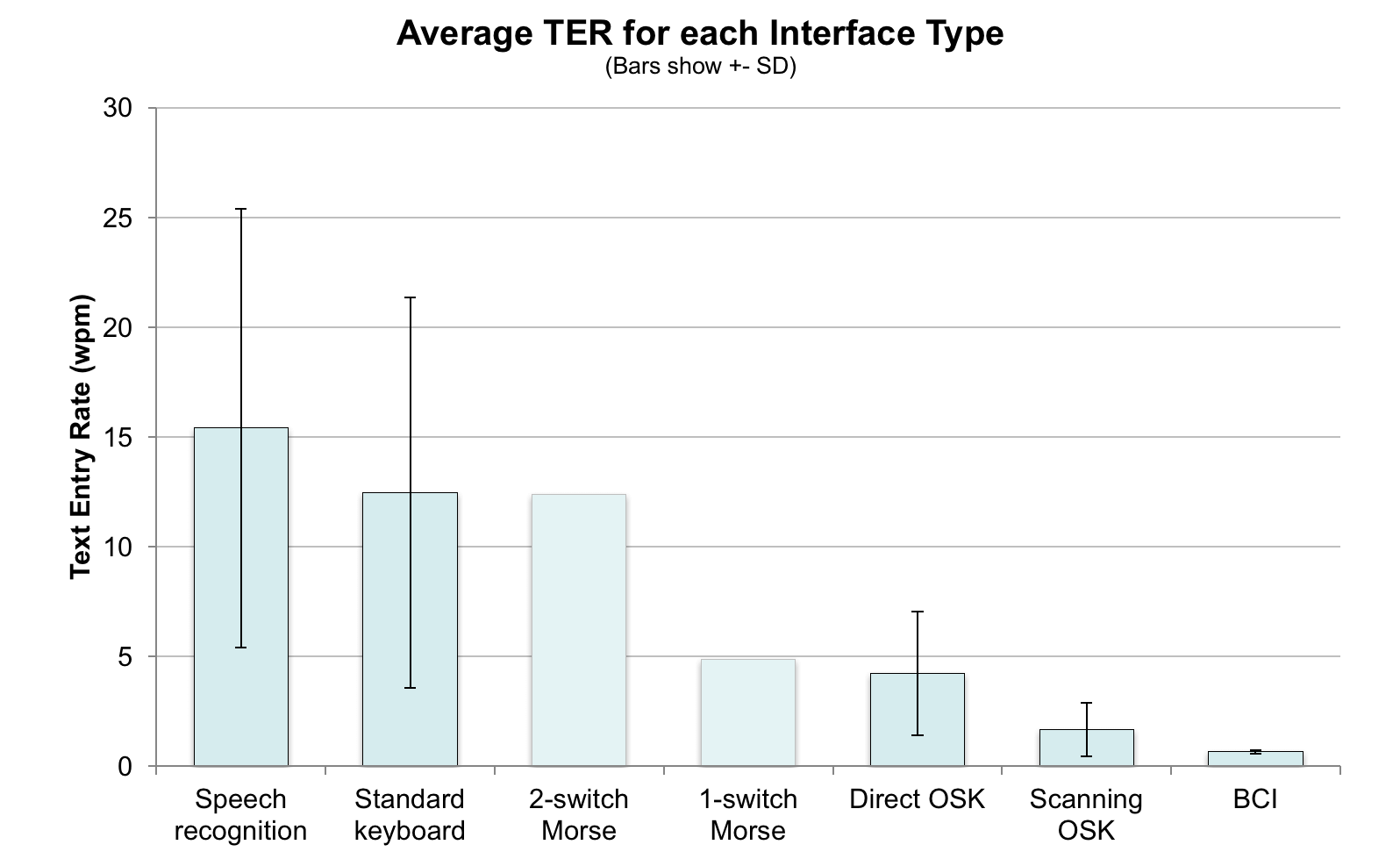Sajay Arthanat and I have been working together to organize the available research evidence on text entry rates (typing speeds) for people with disabilities. This has been a fun project that’s allowed us to revisit the literature published since 1986.
Key findings include:
- Thirty-nine studies involving 248 subjects met our search criteria.
- The median text entry rate (TER) across the literature for individuals with physical disabilities is 7.0 wpm.
- Automatic speech recognition, standard keyboard, cursor on-screen keyboard (OSK), and scanning OSK had at least 4 studies and 30 subjects, with average text entry rates of 15.4, 12.5, 4.2, and 1.7 wpm, respectively.
- Cerebral palsy was associated with significantly slower TER, at 5.5 wpm, than muscular dystrophy (12.5 wpm), spina bifida (10.4 wpm), SCI high cervical (10.1 wpm), and SCI low cervical (13.3 wpm).
- Among the 19 body sites represented, the Fingers bilateral category had the highest average, at 17.72 wpm. Head (2.92 wpm) and Hand (non-typing) (3.95 wpm) were each associated with significantly slower TER than Hands unspecified, Fingers bilateral, Hand with control enhancer, Voice, and Mouth.

Publications from this work
- Koester HH, Arthanat S. (2017). Effect of diagnosis, body site, and experience on text entry rate of individuals with physical disabilities: A systematic review. Disability & Rehabilitation: Assistive Technology, ePub ahead of print.
- Koester HH, Arthanat S. (2017). Text Entry Rate of Access Interfaces Used by People with Physical Disabilities: A Systematic Review. Assistive Technology, ePub ahead of print.
- Koester HH, Arthanat S. (2017). Text Entry Rate of Access Interfaces Used by People with Physical Impairments. Proceedings of RESNA 2017 Conference, Arlington, VA.
- Koester HH, Arthanat S. (2016). Systematic Review of Text Entry Methods for People with Physical Impairments. Paper published in Proceedings of RESNA/NCART 2016 Conference, Arlington, VA.
See more information at kpronline.com/ter-review.
Search the data yourself at kpronline.com/atnode.


